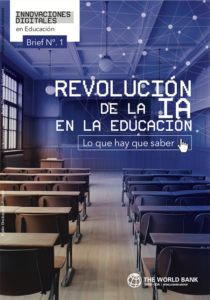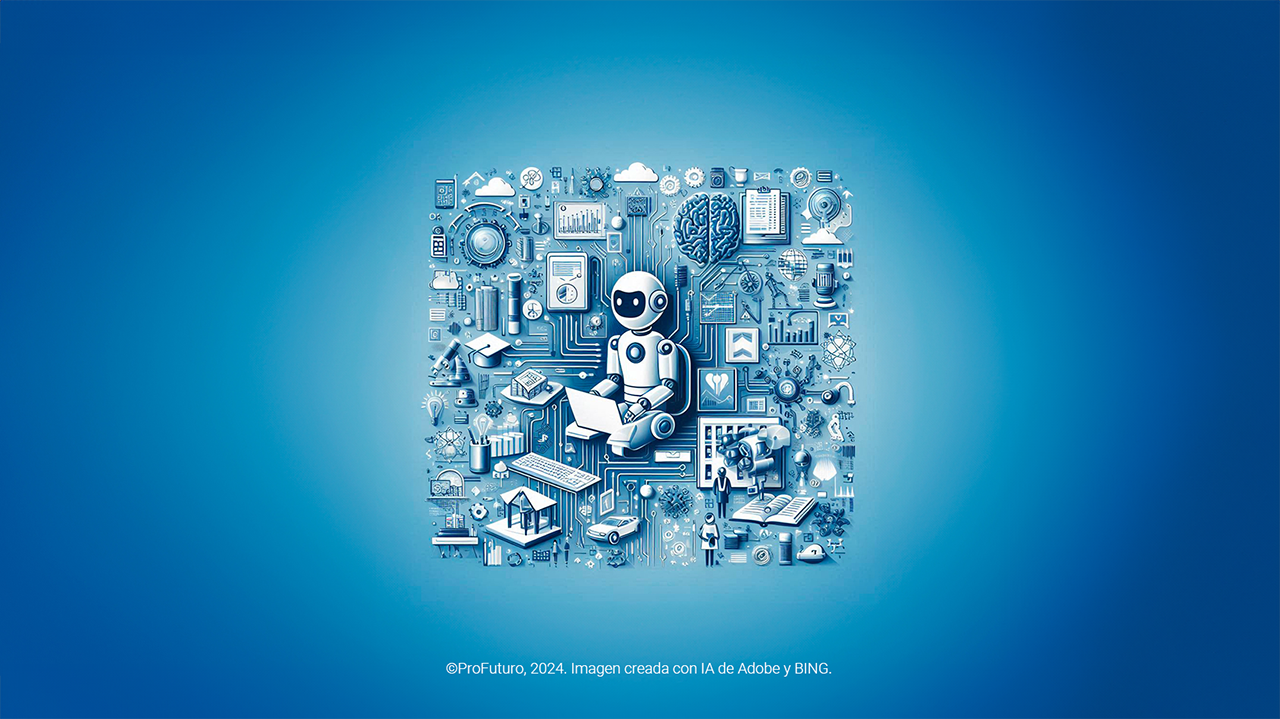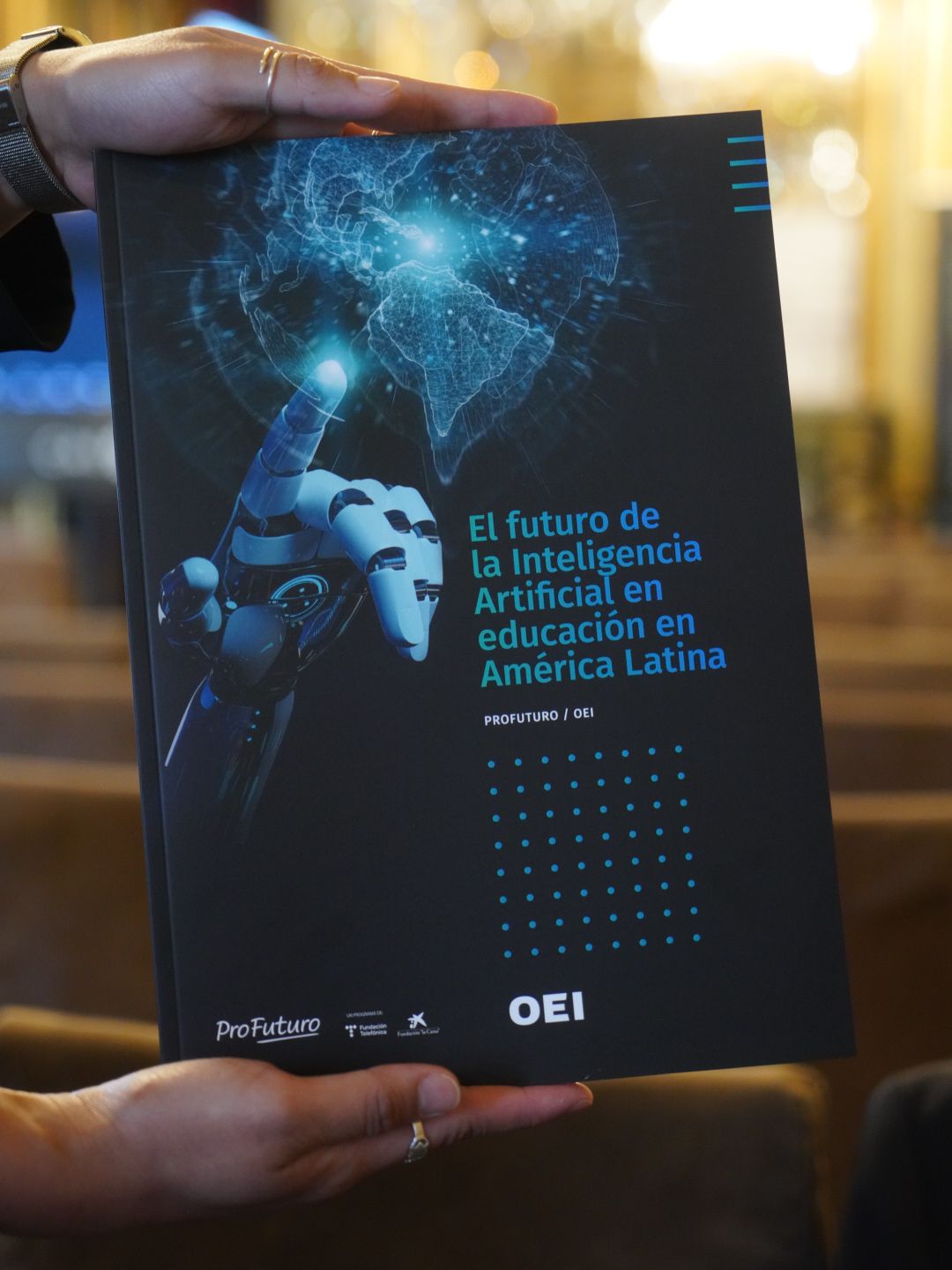 Personalisation of Teaching, Automation of Administrative Tasks, Lesson Planning, Predictive Use of Data… As technologies related to artificial intelligence (AI) become more sophisticated and accessible, their potential to enhance teaching and learning also becomes increasingly evident.
Personalisation of Teaching, Automation of Administrative Tasks, Lesson Planning, Predictive Use of Data… As technologies related to artificial intelligence (AI) become more sophisticated and accessible, their potential to enhance teaching and learning also becomes increasingly evident.
This potential is leading many countries (especially those more advanced in education like Singapore, South Korea, or Finland) to begin harnessing AI to revolutionise their educational systems, each with unique approaches tailored to their specific objectives and challenges.
However, as AI use becomes widespread in our educational systems, policymakers, educational institutions, and all stakeholders must be fully aware of both the potential benefits and the challenges its application entails. To this end, the World Bank has published the report “The Revolution of Artificial Intelligence in Education: What You Need to Know”, a document that gathers the main AI-driven innovations and their application in the Latin American and Caribbean region.
The World Bank report identifies nine key AI-driven innovations, organised into three main categories: solutions for teachers, students, and educational administration.
Nine AI-Driven Innovations That Will Change Education
The World Bank report identifies nine key AI-driven innovations, organised into three main categories: solutions for teachers, students, and educational administration. Let’s take a look at these innovations and some specific examples.
Solutions for Teachers
How is AI transforming the teaching profession? What tools can it provide to teachers to support them in their profession and career development? According to the report, there are four key areas where AI can have a significant impact. Here they are:
AI-Powered Mentors to Attract and Train Teachers
AI is increasingly being used to improve training and support for aspiring teachers. In Chile, the organisation Elige Educar has implemented programs such as “Elige Educar”, “Quiero Ser Profe”, and “Somos Profes, Somos Educadores” to attract and retain teaching talent through the use of chatbots and AI technology.
AI-Based Feedback for Professional Development
AI is also being used to enhance the professional development of active teachers by providing real-time support and feedback. In the United States, tools like TeachFX use voice AI to measure student engagement and speech patterns in the classroom, offering teachers specific insights into their teaching practices.
In Uruguay, Ceibal is testing two pilot projects. One helps teacher mentors in a computational thinking course by automating routine tasks and generating suggestions on teachers’ assignments, which are then reviewed by human mentors before being delivered. This allows mentors to focus on providing individualised help to the teachers who need it most. The second, similar to the aforementioned TeachFX, uses recording technology to analyse teachers’ performance in the classroom. AI generates recommendations based on classroom audio recordings, which are reviewed by a mentor before being shared with the teachers, ensuring the accuracy and relevance of the feedback.
AI-Based Lesson Plans and Other Content
AI algorithms are increasingly used to assist teachers with routine tasks such as creating lesson plans and generating personalised educational content. By analysing curricular standards, learning objectives, and student needs, AI can provide teachers with a solid foundation for designing engaging and effective lessons.
In Chile, the organisation “Tu Clase, Tu País” is developing UmmIA, an AI-based lesson planner that allows teachers to design active and student-centred learning experiences, such as project- and challenge-based learning. UmmIA has three main components: UmmIA Plan, the lesson planner; UmmIA Chat, a professional development space for teachers; and UmmIA Apps, quick solutions for specific tasks like writing letters to parents, creating rubrics, or designing mini-tests.
Automated Routines
AI-based adaptive learning platforms are significantly reducing the administrative burden on teachers. These systems automate repetitive and time-consuming tasks (grading and assessment, communications with students and families, record-keeping…), allowing educators to focus more on teaching and mentoring students, thus improving educational outcomes.
Solutions for Students
AI is revolutionising the student learning experience, transforming not only the work of teachers but also how students learn. Here are three key areas where AI is having a significant impact on students in Latin America and the Caribbean: personalised learning, classroom support, and homework assistance.
Personalised Learning: AI Tutors
Research and scientific evidence have shown that human tutoring is very effective in improving academic performance and other skills such as self-esteem and social behaviours. However, this type of intervention is quite costly and difficult to scale.
AI-assisted tutoring can offer these benefits on a large scale and cost-effectively. A study in Ecuador demonstrated this with the AI-based tutoring system, ALEKS, during the COVID-19 pandemic. The results showed that students who used ALEKS improved their math scores by 0.28 standard deviations and were 9% less likely to repeat a grade.
AI Use in Homework: Rise of Generative AI in Education
The use of generative AI tools like ChatGPT, Claude, Llama, and Gemini is growing in the education sector. These tools help students with tasks such as essays and complex problems, but also raise some ethical concerns. Balancing these academic integrity issues with the use of generative AI in a positive learning environment is crucial.
This requires a proactive approach from educators, involving the development of new pedagogical strategies, redesigning assessments, and cultivating a culture of academic integrity. For instance, the Chilean Ministry of Education provides teachers with guidance on how to use ChatGPT and similar models to enhance teaching.
Solutions for Administration
When it comes to educational management, AI promises to transform it through the automation of administrative tasks, the provision of personalised assistance, and data analysis. This will help increase efficiency, optimise resource allocation, and improve the experience for students and staff.
AI-Equipped Assistants
AI-equipped assistants can handle a wide range of tasks, such as simplifying enrolment processes, providing 24/7 student assistance, aiding teachers, and automating operational processes.
One example is Uplanner, a Chilean solution operational in several countries that offers predictive analysis to identify risk factors in students and plan specific interventions; manages and aligns academic materials with learning outcomes; and optimises the use of infrastructure and resources.
Other platforms like DRUID use chatbots and virtual assistants to assist students, help teachers, and automate administrative processes, enhancing satisfaction and reducing operational costs.
Early Warning Systems
AI-based early warning systems identify students at risk of dropping out, improving predictive accuracy. These systems analyse key indicators such as academic performance, attendance, and behavioural issues to pinpoint students who may need additional support. Traditional early warning systems have shown promising results in reducing dropout rates, and the integration of AI techniques can further enhance their predictive accuracy and timeliness. In Latin America, countries like Chile, Peru, and Uruguay have implemented such systems to reduce school dropout rates.
Centralised Resource Allocation
The equitable distribution of resources in educational systems, especially in the allocation of teachers, is a challenge that AI can also help solve. AI-based centralised allocation mechanisms, such as the “Quiero Ser Maestro” system in Ecuador, have proven effective in optimising the distribution of teachers by considering preferences and qualifications, improving coverage and the quality of “matchings”. Similarly, in Chile, Ecuador, and Peru, algorithms are used for student admissions, providing recommendations and real-time information, which has also led to more favourable allocations.
Ensuring the Transition to AI-Driven Education
The World Bank report also outlines some recommendations to ensure a smooth, equitable, and ethical transition to AI-driven education.
Investment in Infrastructure to Ensure Equitable Access to AI Tools
Organisations like the World Bank and the Inter-American Development Bank are developing tools to diagnose connectivity deficiencies in schools and provide appropriate solutions, as well as financing these improvements through partnerships with the private sector.
Preparing Educators for Effective AI Integration
Teachers need to have technical and pedagogical skills to use AI in the classroom. Initiatives such as the digital skills platform of the IDB and the World Bank and the UNESCO ICT Competency Framework for Teachers offer resources and training to develop these skills.
Building Institutional Capacity
Educational systems must develop the institutional capacity necessary to effectively integrate AI into various processes. This includes creating specialised AI teams, providing continuous training for administrators and staff, and fostering a culture of innovation and experimentation.
Addressing Ethical Risks
The integration of AI poses significant ethical risks that must be proactively addressed. This includes protecting student data privacy, mitigating algorithmic biases, and continuously evaluating human impacts. Frameworks like the OECD AI Principles and the IEEE Ethically Aligned Design offer starting points for addressing these challenges.
Robust Governance Mechanisms for Transparency and Accountability
It is necessary to establish robust governance mechanisms that include the participation of civil society, AI ethics researchers, and affected communities. Developing guidelines with policymakers and technology providers will ensure transparency and accountability.
A Strategy for the Future of AI-Driven Education
Preparing for AI-driven education requires a comprehensive strategy focused on infrastructure, human capacity development, public goods creation, and ethical risk mitigation. Coordinated investments and appropriate governance frameworks will enable the responsible harnessing of AI’s transformative potential, creating more equitable and effective learning experiences for all.
Preparing for the Future of Education
AI offers immense opportunities to transform education in Latin America and the Caribbean, but its implementation must be careful and ethical. By understanding the current landscape, anticipating future trends, and proactively addressing challenges, the region’s nations can create inclusive, innovative, and effective learning experiences for all students. The AI revolution in education is underway, and the time to act is now.






